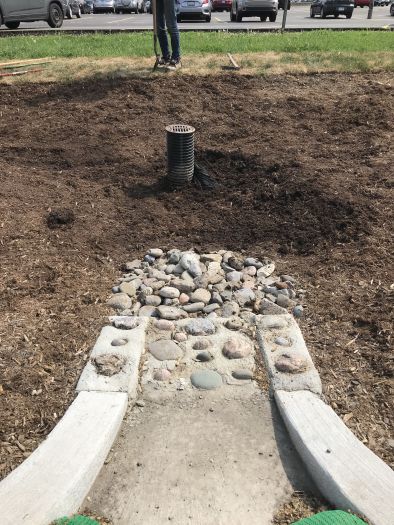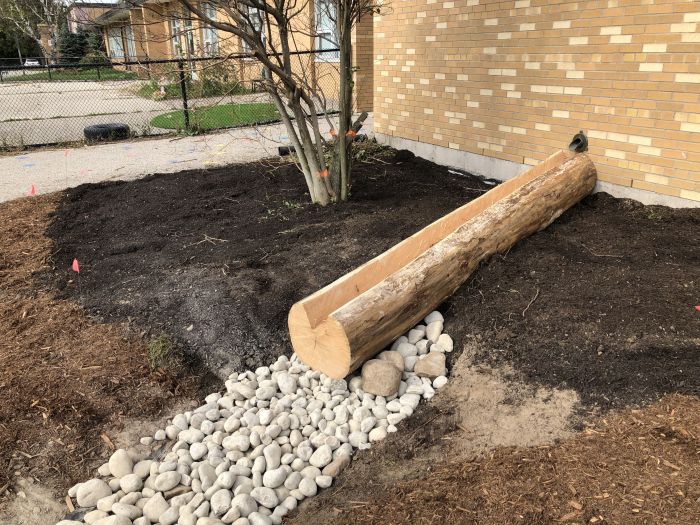Construction: large stone and riprap
Revision as of 16:15, 21 July 2022 by SamanthaPelayo (talk | contribs) (Created page with "Riprap serves as a protective layer to: prevent sediment entering the underlying layers and clogging the LID facility, dissipate stormwater energy, and stabilize the terrain and slope. '''Construction Steps:''' #Backfill the material from the outside of the LID facility to avoid compaction. #Ensure the material is being placed to the elevation and thickness to the design requirements. '''Key Inspection Points:''' *Arrival of material to the site: material meets specif...")
Riprap serves as a protective layer to: prevent sediment entering the underlying layers and clogging the LID facility, dissipate stormwater energy, and stabilize the terrain and slope.
Construction Steps:
- Backfill the material from the outside of the LID facility to avoid compaction.
- Ensure the material is being placed to the elevation and thickness to the design requirements.
Key Inspection Points:
- Arrival of material to the site: material meets specifications as per design, no debris in the aggregate and, if possible, washed or clean stone with little to no fine materials in it.
- Placement: material is backfilled to the right depth and elevation.
Common Mistakes to Avoid:
- Use of wrong material that does not meet design specifications. If there are changes in the material, it must be approved by the supervisor or project manager.


